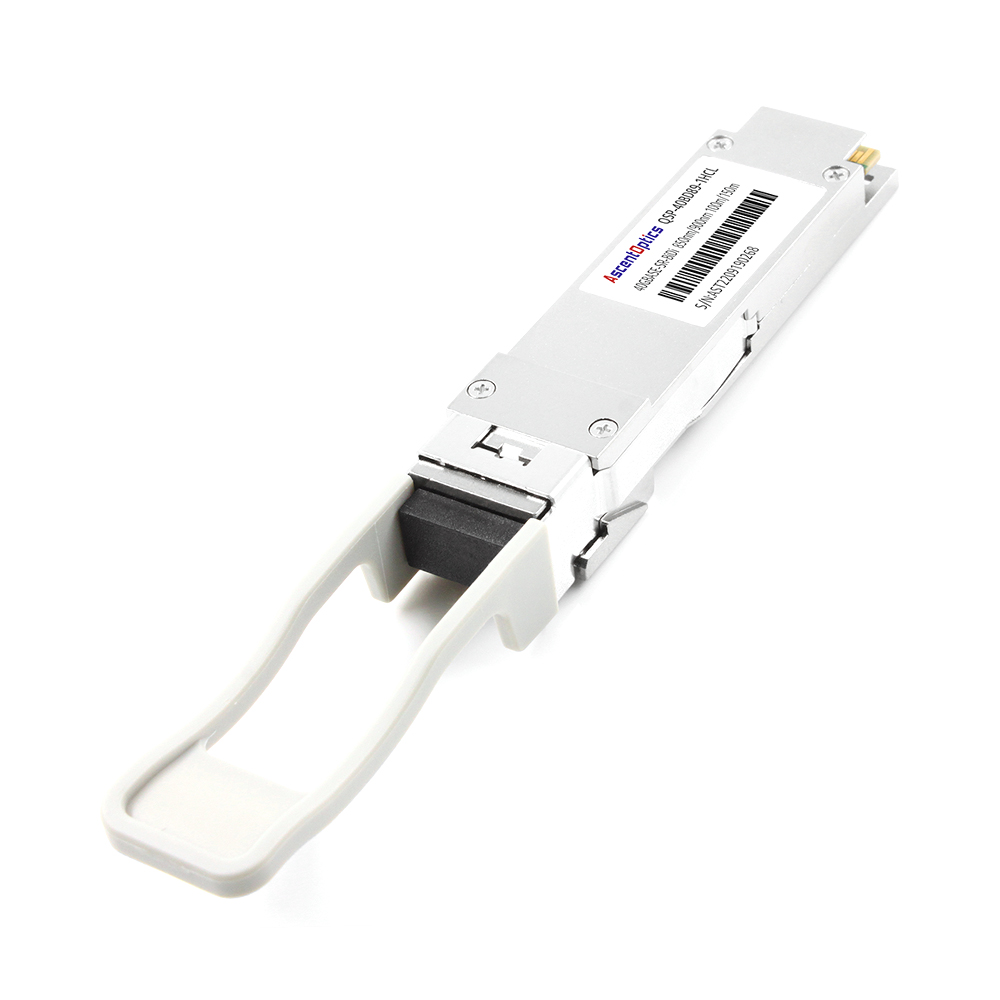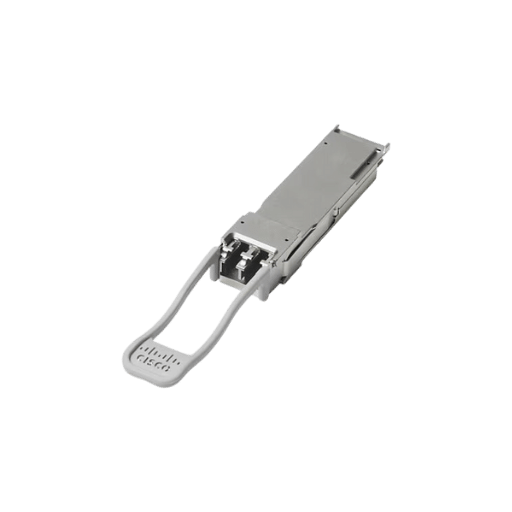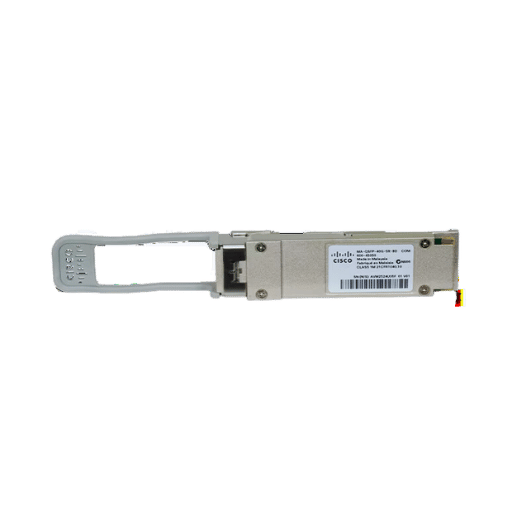With regards to high-speed data transmission, the type of handed-out transceiver modules determines the network’s efficiency and performance. Any network administrator will see how the Cisco QSFP-40G-SR-BD transceiver module is one of the advanced technologies that allow ultra-high data rates of up to 40G. This guide will answer each of the abovementioned queries, which features an exclusive description of the QSFP-40G-SR-BD module, including its physical and electrical characteristics, fields of use, and operation. One teaches people about the operating principles of the device and its advantages, which allow for the proper configuration of the network infrastructure. This holistic interrogation not only considers the hardware characteristics of the transceiver but also addresses the transceivers mounted on Cisco hardware so as to be useful for network engineers and professionals.

The QSFP-40G-SR-BD transceiver from Cisco is a quad small form-factor pluggable MSA transceiver. It works over multimode fibre on distances supported of up to 150 metres at 850 nm. The module configuration makes it possible to obtain a maximum data rate of 40 Gbps in a duplex LC connector. It is also made in compliance with appropriate standards which relates to the 40GBASE-SR4 system which assures compatibility with external systems. QSFP – 40G – SR – BD is built particularly for improving the bandwidth in a computing center while optimizing energy cost.
The Cisco QSFP-40G-SR-BD transceiver is a widely deployed device within data centers with the following applications:

The difference between the Cisco QSFP-40G-SR-BD transceiver and other 40G QSFP modules is the design and performance factors of its case. It has been established that most 40G QSFP modules, for instance, the QSFP-40G-LR4, are designed for long-distance connections that tend to go up to ten kilometers on the use of single-mode fiber optics. However, the QSFP-40G-SR-BD is mainly most suitable for connections that do not exceed one hundred and 150 meters. In addition, the QSFP-40G-SR-BD operates over both MMF and SMF, which is an advantage in a network with different types of fiber configurations. It is also known to consume less power in comparison to some high-power modules, thus making it a suitable module to use in energy-efficient data centers. In general, the QSFP-40G-SR-BD transceiver has performance characteristics enabling its effective utilization in short-range, high-density data transmission applications.
Apart from proper compatibility with the other devices and network performance, the Cisco QSFP-40G-SR-BD transceiver offers some effective operational improvements. First of all, the short range of up to 150 meters allows for effective transmission of large volumes of data in data centers, reducing the waiting time for workflows and facilitating more data transfer than various optical modules can hold alone. Second, the dual mode interface makes it possible to achieve both multimode and single mode of use, eliminating the constraint imposed by either type of optical Fiber Cables. Also, specific to QSFP-40G-SR-BD, the low power consumption design leads to reduced power usage which results in lower operation costs for the energy of a data center. Finally, the high-performance capabilities positively influence the functioning and provision of connectivity without any issues in the high-density provision, changing the users’ perception toward improved network reliability.
The Cisco QSFP-40G-SR-BD transceiver has been designed for polytechnic and Cisco Schulen Cube partisan interchange units as a fully supporting transceiver with any Cisco switches and routers. Contain provisions and requirements to the structure of the Business Communication Application Platform (BCAP) Executive Order 45-263-387, ensuring integration with any other 40G-capable Cisco platform devices supporting documentation. Such support rearranges installations and enhances inter-grain performance overhead, especially where corresponding QSFP modules are available. Where this is the case, it is advisable to check the Cisco hardware compatibility matrix for specific model compatibility.

They claim that the Cisco QSFP-40G-SR-BD transceiver works well up to a distance of 150 meters on OM3 multimode fiber. To accomplish this, the 40 Gbps link is operational over any application that needs a lot of bandwidth. And, of course, there is no distortion on the signal, which results in low bit error rates for high-efficiency data. This also means that the temperature when in use does not go beyond the limits prescribed, hence the prolonged performance, even more so in extreme environments.
The Cisco QSFP-40G-SR-BD transceiver is mainly focused on Mpo connectors and so it will be imperative to examine any use of LC connectors compatibility. There are adaptors that make it possible for the two connectors to connect into Mpo and Mo, making it very easy to use in places where there are LC termination Relays. It is essential that when one uses the multi-mode fiber, it should be of either OM3 or OM4 type, for these are necessary when optimal performance metrics of a transceiver are desired. Attention to the type of fiber and connector arrangement needed will also restrict the conditions in which LC connectors will be used to ensure optimal signal quality and the greatest throughput over the needed distances.

Considering the increasing number of other devices incorporated into local networks, the Cisco QSFP-40G-SR-BD module aims to be compatible with numerous 40G QSFP+ standards-based switches and routers made by Cisco and other manufacturers. It works great with multimode fiber cables and adheres to SFF-8436 standards, which provides excellent data links to the supported platforms. While interfacing such devices with different types of transceivers, attention should be paid to both the transmitter device and the receiving device with respect to the speed rating of certain optical signals. In addition, it is possible that some fall patches, in conjunction with other possible software changes, may need to be installed for full inter-operation of devices and to enhance performance.
What are the Certification and Compliance Standards?

Cisco® devices comply with standards developed for specific industries to maintain compatibility and reliable device operation. The major ones include the IEEE 802.3 standard, whose focus is the family of Ethernet communications, covering, among other things, cable types such as the 40G QSFP+. The adoption of SFF-8431 and SFF-8436 standards certifies the compatibility of transceivers from different manufacturers. Safety and EMC also include regulatory requirements such as the FCC and CE regulations, which dominate Cisco®. Strict implementation of these regulations guarantees the smooth functioning of the devices within the existing networks, enhancing transmission efficiency and stability.
The Environmental and UL Testing Program conforms Cisco® devices to environmental requirements related to operational environment conditions. The testing is performed for extreme cold, extreme heat or humidity as well as dust, particles and other exterior contaminants to make sure that the equipment is reliable in every type of operation. In addition, devices undergo UL certification to ensure the safety and electrical recognitions, thus encouraging and assuring users of the reliability of using Cisco® products in multiple operational conditions.
The RoHS restriction and certification verifies that Cisco® does not manufacture their devices with specific hazardous materials, including lead, mercury, cadmium, and particular flame retardants. Such compliance not only ensures less harm to the environment during the making of the products but also promotes healthy recycling and disposal at the end of the product lifecycle. It is clear that complying with the RoHS standards contributes to the prevention of e-waste risk through the efforts of Cisco®. Therefore, consumers gain by using safer products that meet international laws on the protection of the environment.
A: The QSFP-40G-SR-BD is the optical transceiver module towards high performance computing and service providers. The transceiver enables bidirectional data transmission through one duplex lc fiber which is an economical way of implementing the 40GBASE-SR-BIDI networking.
A: In include in the below, supporting 40GBASE-SR-BIDI, power efficient and low, QSFP Fom factor, temperature variations. The module is also workable with most of Cisco’s networking equipment.
A: 40GBASE-SR-BIDI Technology allows one Duplex LC link to used to achieve transmission and reception of data over two wavelengths using same fiber. This integrated approach helps in optimizing the fibre networks already in place.
A: Cisco QSFP-40G-SR-BD transceiver indeed does support Digital Optical Monitoring (DOM) features which enable the end users to, in real time, check certain parameters such as, the optical output power emanating from the module, the input power, the module temperature and the supply voltage of the module.
A: The temperature range of the module allows for operation in a wide range of environments such as data centers, enterprise network and service provider network applications.
A: Yes, the optical transceiver module is also used within networks designed for 10G rate making integration easy and future upgrade to higher date rates.
A: The part number for this optical transceiver is QSFP-40G-SR-BD, which is part of the Cisco 40GBASE QSFP family.
A: Yes, the Cisco QSFP-40G-SR-BD is a compatible transceiver unit and hence aftis many of the manufacturer’s OEM networking equipment.
A: Both devices offer 40G optical transport, the connectorized module approach for QSFP-40G-SR-BD is a single optical LC connector and A single LC duplex Fiber cable while four multi-mode fibers of Pairs is required for QSFP-40G-SR4. The SR-BD is usually regarded as a low cost solution and easier to deploy due to less complex cabling.
A: The transceiver supports high-performance computing, data centers enterprise_networks and service provider applications that enable effective and efficient transmission of data in various applications.